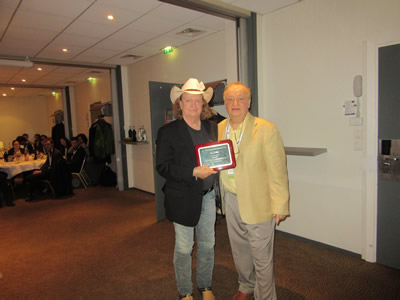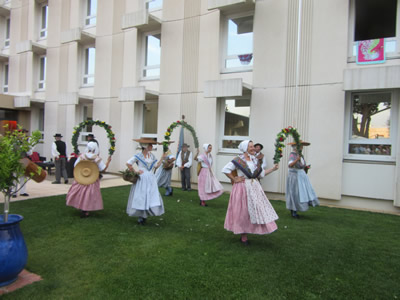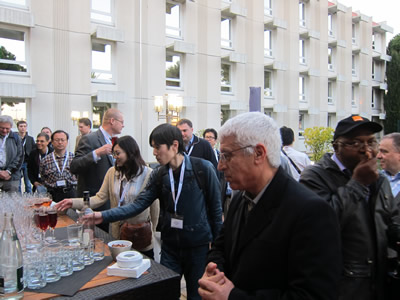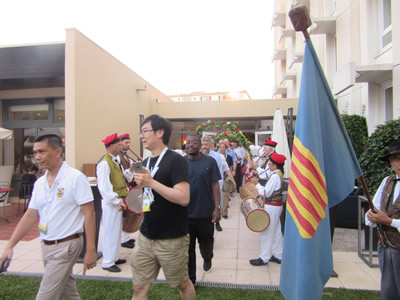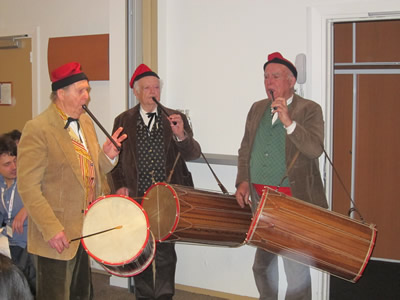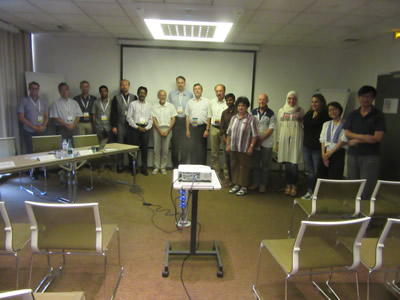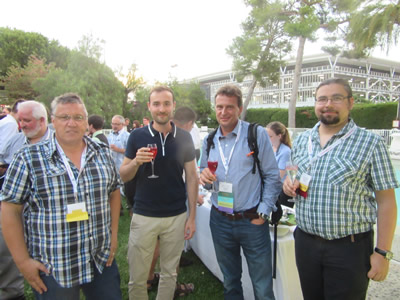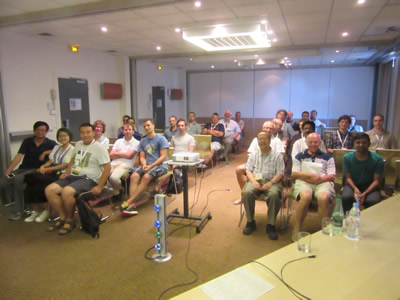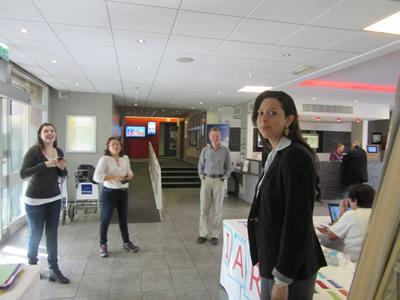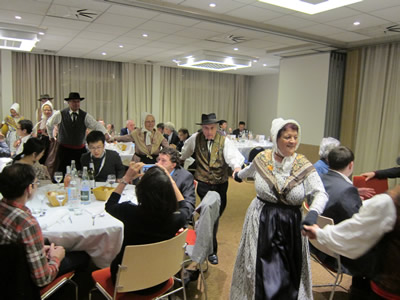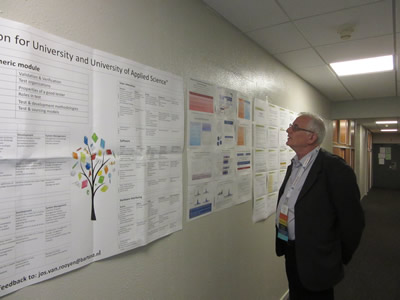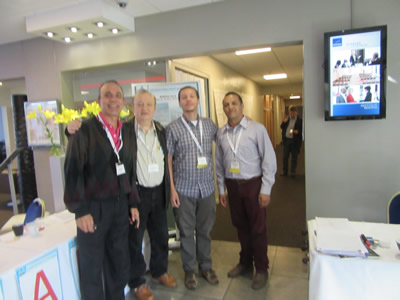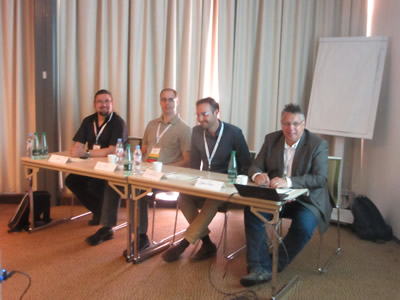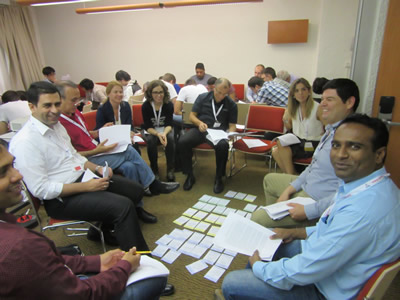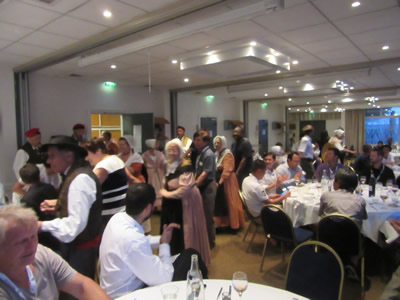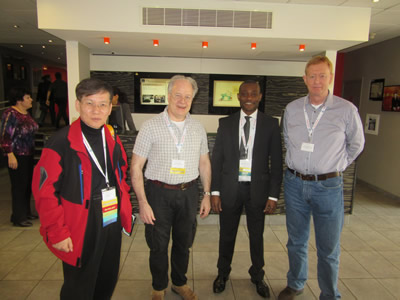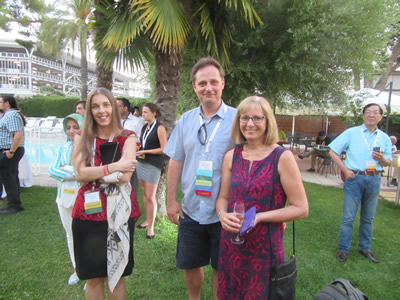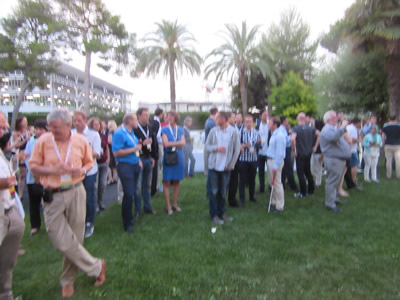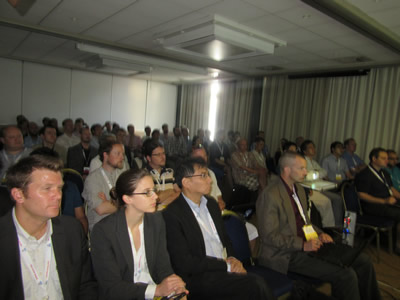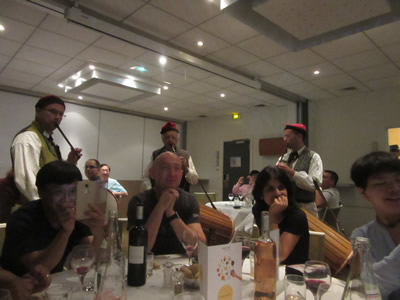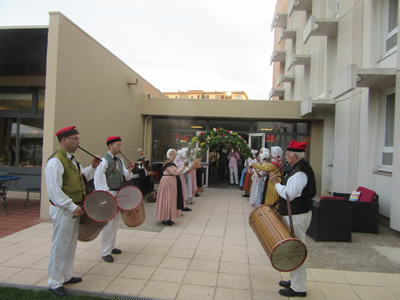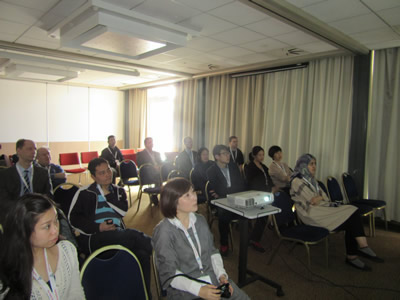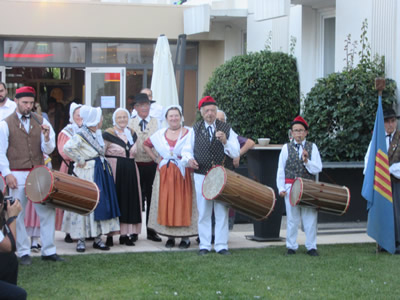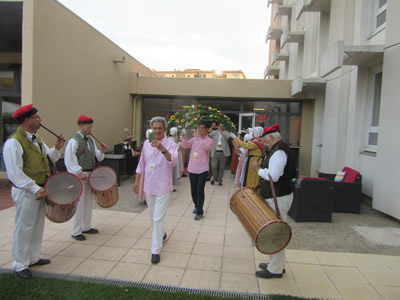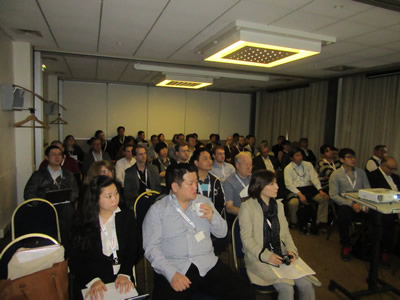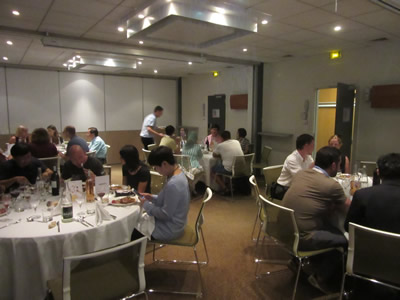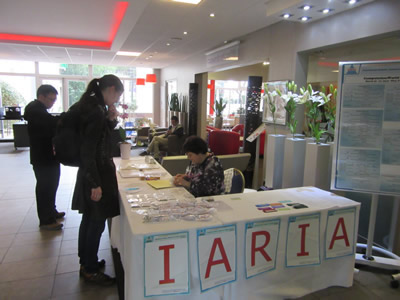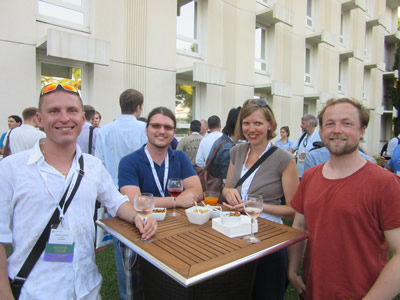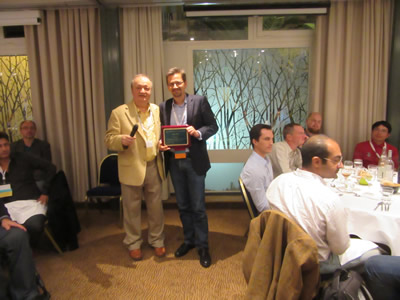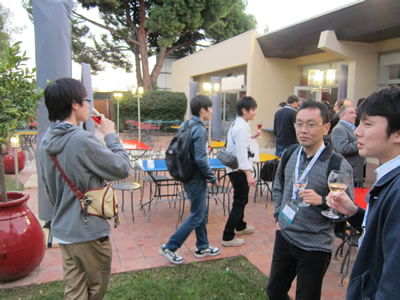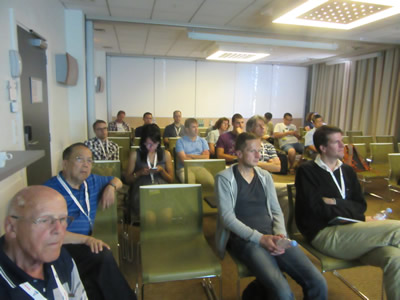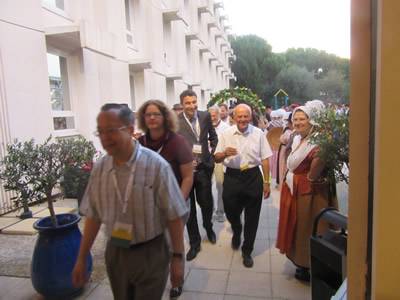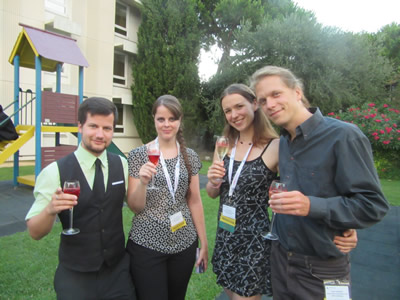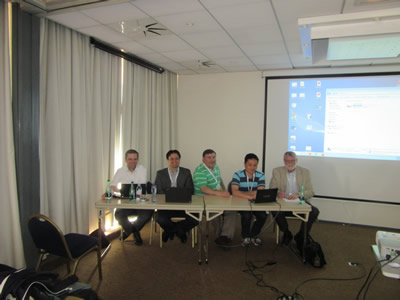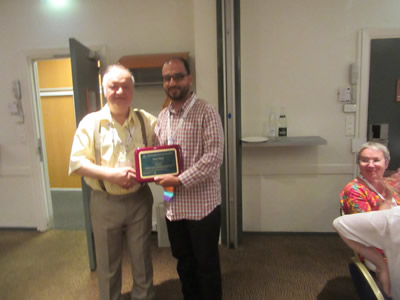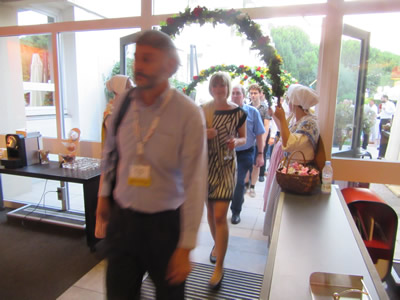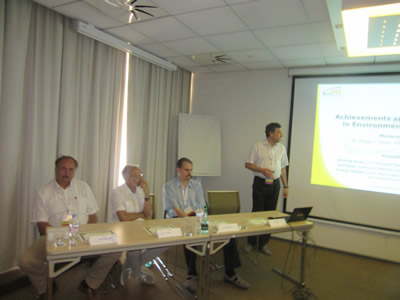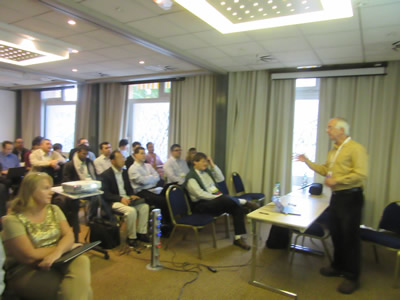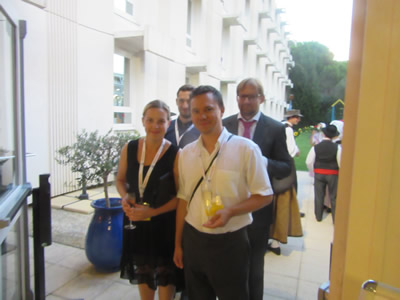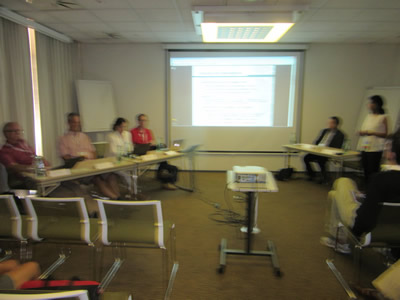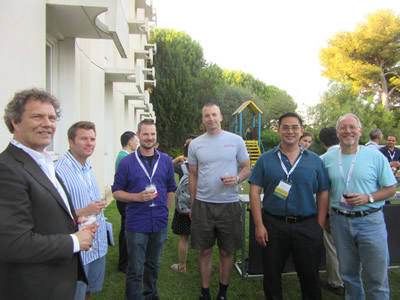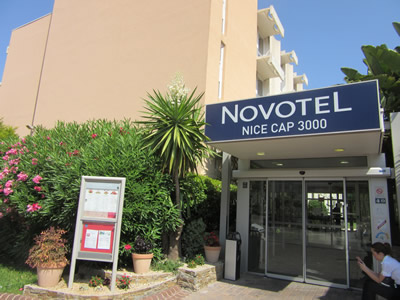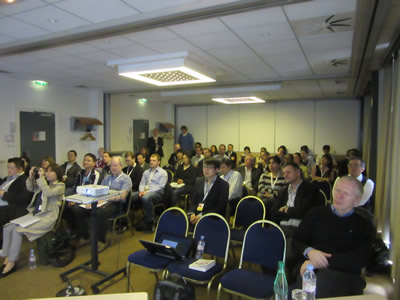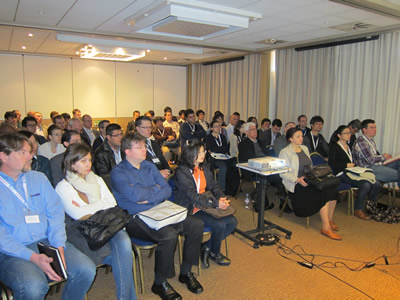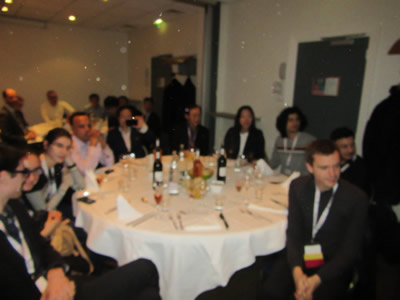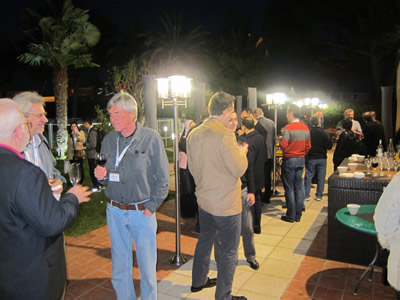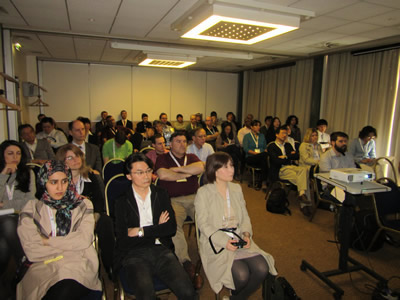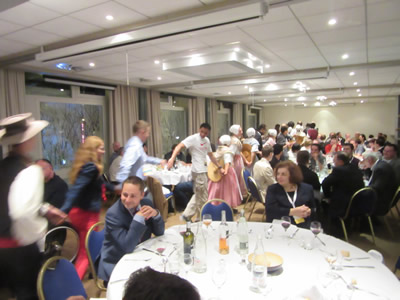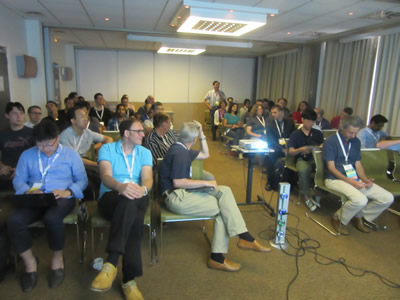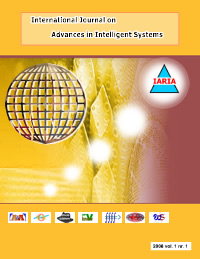ACHI 2025 - The Eighteenth International Conference on Advances in Computer-Human Interactions
May 18, 2025 - May 22, 2025
ACHI 2025: Call for Papers
Onsite and Online Options: In order to accommodate various situations, we are offering the option for either physical presence or virtual participation (pdf slides or pre-recorded videos).
The Eighteenth International Conference on Advances in Computer-Human Interaction, ACHI 2025, was proposed as a result of a paradigm shift in the most recent achievements and future trends in human interactions with increasingly complex systems. Adaptive and knowledge-based user interfaces, universal accessibility, human-robot interaction, agent-driven human computer interaction, and sharable mobile devices are a few of these trends. ACHI 2025 also brings a suite of specific domain applications, such as gaming, e-learning, social, medicine, teleconferencing and engineering.
ACHI 2025 continues a series of events targeting traditional and advanced paradigms for computer-human interaction in multi-technology environments. The conference covers also fundamentals on interfaces and models, and highlights new challenging industrial applications and research topics.
We solicit both academic, research, and industrial contributions. We welcome technical papers presenting research and practical results, position papers addressing the pros and cons of specific proposals, such as those being discussed in the standard fora or in industry consortia, survey papers addressing the key problems and solutions on any of the above topics short papers on work in progress, and panel proposals.
Industrial presentations are not subject to the format and content constraints of regular submissions. We expect short and long presentations that express industrial position and status.
Tutorials on specific related topics and panels on challenging areas are encouraged.
The topics suggested by the conference can be discussed in term of concepts, state of the art, research, standards, implementations, running experiments, applications, and industrial case studies. Authors are invited to submit complete unpublished papers, which are not under review in any other conference or journal in the following, but not limited to, topic areas.
All topics and submission formats are open to both research and industry contributions.
ACHI 2025 conference tracks:
AI: AI-powered ACHI
Human-centered AI design: needs, intuitive and accessible interactions; Explainable and trustworthy AI: AI models for transparent decision-making processes; Multimodal interaction in AI systems: integrated speech, gesture, and touch; AI in Virtual and Augmented Reality: immersive environments with AI - realism and interactivity - ; Adaptive user interfaces: dynamically adjustable to individual user preferences and behaviors; Ethical considerations in AI-Human interaction: privacy, bias, and the societal impact of AI technologies; AI and accessibility: assistance for users with disabilities; Collaborative AI systems: systems working alongside humans, productivity, decision-making processes; Emotion recognition and response: understand and respond to human emotions.
INTER: Interfaces
Graphical user interfaces; Intelligent user interfaces; Adaptive user interfaces; Multi-modal user interfaces; Context-based interfaces; Virtual reality and 3D interfaces; Speech and natural language interfaces; Interfaces for collaborative systems; Interfaces for restricted environments; Internationalization and reflections of culture on interface design; Interfaces for disadvantaged users; Interface specification and design; Interface prototyping; Interface testing; Interface evaluation; Interface generators and other tools for developing interfaces; Data visualization; Visualization techniques; Interactive visualization
SUSTAIN-CHI: CHI and sustainability
What is the scope of sustainable HCI research presently? How does sustainable CHI align with global sustainability challenges? How could CHI research and practice support overcoming societal barriers to positive environmental changes? How does CHI relate to circular economies and life cycle thinking? What methods and methodologies support sustainable CHI research? How can CHI challenge unsustainable everyday practices? How can CHI support building sustainable cultures? How can CHI help develop sustainable behaviors among children and youth?
HUM-IND4.0: Human-centered industrial technologies
Human-centered process optimization and systems integration; Human-centered chains; Human-centered risk management and nano-technology; Human-centered automation processes and technologies; Human-in-the-middle for micro and nano technology simulations; Industry chains and human-robot and human-agents interaction; Micro and nano technology-oriented human challenges; Human-oriented manufacturing processes; Human aspects for reliable process chains; Risk management on nano-particles/interaction with human beings; Human-skills and nano-technologies (e.g., additive manufacturing); Industry 4.0 human-oriented challenges
OUI: Organic user interfaces
Interface-oriented materials and devices; Physical and digital representation; Sensing and display technologies; Rollable and foldable displays with tactile properties; Skin-based input; Analog input interaction design; Flexible display technologies; Functional-based display forms; Flexible-computing and curve computer interactions; 3D continuous display interfaces
HAPTIC: Haptic interfaces
Fundamental of haptic interactions; Tangible user interfaces; Bidirectional information flow ; Haptography; Haptic feedback and control; Bodyware (embedded sensors; flexible structures, associative memories, actuation and power systems); Magnetic levitation haptic interfaces; Kinetic motion-based interaction; Kinetic motion and haptic design; Mindware (learning, adaptation, head-hand coordination, bimanual coordination; discovering affordance, interaction and imitation); Language of motion / Gesture annotation; Interfaces with kinetic properties; Sensor actuator design, development and evaluation; Linear haptic display; Fingertip haptic display; Pen based force display; High bandwidth force display; Quality of experience model for haptic interactions; Haptics rendering;
SYSTEMS: Interactive systems
Highly interactive systems; Intelligent agents and systems; Adaptive systems; Context-aware systems; Multi-user multi-interface systems; Collaborative systems; Computer-supported cooperative work; Distributed information spaces; Communicators and advisory systems; Interaction through wireless communication networks
DEVICES: Interaction devices
General input and output devices; Virtual reality input and output devices; Interaction devices for immersive environments; Shareable devices and services; Mobile devices and services; Pervasive devices and services; Small displays; Very large displays; Tangible user interfaces; Wearable computing; Interaction devices for disadvantaged users; Interaction devices for computer games
DESIGN & EVAL: Interaction & interface design & evaluation
Interface metaphors; Interaction styles; Interaction paradigms; Requirements specification methods and tools; Analysis methods and tools; Design methods and tools; Evaluation paradigms; Evaluation methods and tools; Evaluation frameworks; Scenarios; Task analysis; Conceptual design; Physical design; Information architecture; Information design for websites; Guidelines and heuristics; Experience design; Environmental design; Ethnography; Contextual design; Service design;
MODELS: Principles, theories, and models
Cognitive models; Conceptual models; Mental models; Frameworks for cognition; Model-based design of interactive systems; Formal methods in human-computer interaction
USER: User modeling and user focus
Usability and user experience goals; User testing; User modeling; User profiling; Predictive models (e.g., for user delay prediction); Human perceptible thresholds; User support systems; Psychological foundations for designing interactive system; Human information processing; Digital human modeling; Engineering psychology; Ergonomics; Hearing and haptics; Affective computing
CHILDREN: Children-computer interaction
Using interface-oriented technology toys; Psychological basis for children interfaces; Children interfacing thinking; Smart interfaces for autistic children; Interactive application for Children with Mixed Abilities; Mining children behaviors; Interaction with children with visual impairments; Kids haptic, wearable, tangible learning; Kids vocal interfaces; Immersive gameplay interfaces; Speech loudness interfaces; Children cognitive interfacing skills; Conveying children emotions; Deformable interfaces for children; Incentivizing children crowdsourcing activities; Children and destructive games; Children and interacting fictions; Children and biotic game; Children participatory design; Children and visual design; Children emotional perception; Object-oriented drawing at young age; Children-powered access paradigms and technologies; Children social interaction experiences; Children online gaming behavior; Children and wearable devices; Children-oriented design interaction shortcuts; Teens health self-care; Self-care technologies
ELDERLY: Designing for an aging population
Smart environments for elders; Rethinking mobile interfaces for older users; Motion-based video games in care home settings; Interacting assistive approaches for elders; Detecting elderly emotion; Human-machine interaction for disabled users; Adult opportunistic device interactions; Elderly social interaction; Degrading skills adaptation for elderly interfaces; Robots collaboration for elderly emergency; Unmanned systems for elderly: Applications of ecological interface design
PARADIGMS: Traditional and emerging paradigms
Interaction paradigms; Mobile computing; Wearable computing; Location-aware computing; Context-aware computing; Ubiquitous computing; Pervasive computing; Transparent computing; Attentive environments; Virtual reality; Augmented reality and tangible bits; Immersive environments; Human-based computation; Visual languages and environments; End-user programming; Hypermedia advances and applications; New visions of human-computer interaction
ACCESS: Usability and universal accessibility
Interaction and interface design for people with disabilities; Interaction and interface design for the young and the elderly; Universal access and usability; Usability engineering; Usability testing and evaluation; Usability and internationalization
HUMANWEB: Human-Web Interaction
Natural language interfaces; Keyword-based query interfaces; Hybrid query interfaces; Emotional behavior; Adaptive Web interfaces; Learning User Profiles; Personalized Interfaces; Remembrance Agents; Interaction visualization; Social and psychological challenges
HUM-ROBOTS: Human-robot interaction
Fundamentals of human-robot cooperation; Cognitive models of human-robot interaction; Adaptable autonomy and knowledge exchange; Autonomy and trust; Awareness and monitoring of humans; Task allocation and coordination; Human guided robot learning; User evaluations of robot performance; Metrics for human-robot interaction; Long-term interaction robotics; Health and personal care robotics; Social Robotics; Multi-modal human-robot communication; Robot intermediaries; Experiments and applications
HUM- AGENTS: Agents and human interaction
Principles of agent-to-human interaction; Models for human-agent interaction; Social persuasion in human-agent interaction; Designing for human-agent interaction; Socially intelligent agents and the human in the loop; Agents for human-human interaction; Agent-based human-computer-interaction; Human cooperation and agent-based interaction; Human interaction with autonomous agents Agent-based human-robot interaction; Human and artificial agents emotional interaction
SOCIAL: Social aspects of human-computer interaction
Societal implications of human-computer interactions; Social computing and software Online communities Weblogs and other community building tools Online support for discovery and creativity; Tool support for discovery and innovation Expressive and attentive interfaces and environments Affective aspects of human-computer interaction Emotional design
GAMES: Computer games and gaming
Computer game technology; Computer game engineering; Foundations of computer game design and development; Development processes and supporting tools; Management aspects of computer game development; Architectures and frameworks for computer games; Game-based training and simulation; Serious games; Multi-user games; Online games; Online gaming; Game theories; Audio, video and text in digital games; New computer games and case studies; Performance improvements in computer games; Social impact of games and gaming
EDUCATION: Human-computer interaction in education and training
Interactive systems for education and training; Online and communications support for education and training; Interfaces, interactions and systems for distance education; Software tools for courseware development and delivery; Collaborative systems for teaching, studying and learning; Handheld mobile devices for education and training; Advisory and recommendation systems Techniques and tools for information localization, retrieval & storage; Web annotation systems; Case studies and applications
MED APPS: Applications in medicine
Interactive systems for medical applications; Interactive systems for telemedicine; Interactive systems for telehealth; Interactive systems for telepathology; Interactive systems for telecardiology; Interactive systems for telesurgery; Interactive personal medical devices; Digital imagery and visualization frameworks; Role of colors and color imaging in medicine; Multidimensional projections with application to medicine; Data mining and image retrieval techniques for medical applications; Imaging interfaces and navigation; Internet imaging localization, retrieval and archiving; Video techniques for medical images; Internet support for remote medicine; Computer-controlled communications for medical applications; Medical informatics; Software and devices for patient monitoring; Interactive software for therapy and recovery
TELECONF: Teleconferencing
Fundamentals for teleconferencing; Platforms for teleconferencing; Devices for teleconferencing; Videoconferencing, Web Conferencing; Performance in teleconference applications; Real-time aspects in teleconferencing; Privacy and security in teleconference applications; QoS/SLA for teleconferencing applications; Teleconferencing services; Business models for teleconferencing
APPLICATIONS: Other domain applications
Interactive interfaces and systems for scientific applications; Interactive interfaces and systems for engineering applications; Interactive interfaces and systems for business applications; Interactive interfaces and systems for activities in arts & humanities; Interactive interfaces and systems for scientific research; Other applications of interactive interfaces and systems
Deadlines:
Submission | Feb 21, 2025 |
Notification | Mar 24, 2025 |
Registration | Apr 05, 2025 |
Camera ready | Apr 13, 2025 |
Deadlines differ for special tracks. Please consult the conference home page for special tracks Call for Papers (if any).
INSTRUCTION FOR THE AUTHORS
Authors of selected papers will be invited to submit extended versions to one of the IARIA Journals.
Publisher: XPS (Xpert Publishing Services)
Archived: ThinkMindTM Digital Library (free access)
Prints available at Curran Associates, Inc.
How to submit to appropriate indexes.
Only .pdf or .doc files will be accepted for paper submission. All received submissions will be acknowledged via an automated system.
Contribution types
- regular papers [in the proceedings, digital library]
- short papers (work in progress) [in the proceedings, digital library]
- ideas: two pages [in the proceedings, digital library]
- extended abstracts: two pages [in the proceedings, digital library]
- posters: two pages [in the proceedings, digital library]
- posters: slide only [slide-deck posted on www.iaria.org]
- presentations: slide only [slide-deck posted on www.iaria.org]
- demos: two pages [posted on www.iaria.org]
FORMATS
Only .pdf or .doc files will be accepted for paper submission. All received submissions will be acknowledged via an automated system.
Final author manuscripts will be 8.5" x 11", not exceeding 6 pages; max 4 extra pages allowed at additional cost.
Helpful information for paper formatting for MS Word can be found here.
There is a community provided LaTeX template: the CTAN package iaria (with full IARIA formatting rules, including IARIA citation style, but for providing citation style it is tightly bound to pdflatex+biblatex+biber). In addition, there is also iaria-lite (not bound to pdflatex+biblatex+biber, but compatible with any TeX stack; thus, it cannot provide the IARIA citation formattings, but only the titlepage and content-related IARIA formatting rules). Based on the iaria package, there is a minimal working example as Overleaf template. When you are using the LaTeX templates, please still adhere to the additional editorial rules.
Slides-based contributions can use the corporate/university format and style.
Your paper should also comply with the additional editorial rules.
Once you receive the notification of contribution acceptance, you will be provided by the publisher an online author kit with all the steps an author needs to follow to submit the final version. The author kits URL will be included in the letter of acceptance.
We would recommend that you should not use too many extra pages, even if you can afford the extra fees. No more than 2 contributions per event are recommended, as each contribution must be separately registered and paid for. At least one author of each accepted paper must register to ensure that the paper will be included in the conference proceedings and in the digital library, or posted on the www.iaria.org (for slide-based contributions).
CONTRIBUTION TYPE
Regular Papers (up to 6-10 page article -6 pages covered the by regular registration; max 4 extra pages allowed at additional cost- ) (oral presentation)
These contributions could be academic or industrial research, survey, white, implementation-oriented, architecture-oriented, white papers, etc. They will be included in the proceedings, posted in the free-access ThinkMind digital library and sent for indexing. Please submit the contributions following the instructions for the regular submissions using the "Submit a Paper" button and selecting the appropriate contribution type. 12-14 presentation slides are suggested.
Short papers (work in progress) (up to 4 pages long) (oral presentation)
Work-in-progress contributions are welcome. These contributions represent partial achievements of longer-term projects. They could be academic or industrial research, survey, white, implementation-oriented, architecture-oriented, white papers, etc. Please submit the contributions following the instructions for the regular submissions using the "Submit a Paper" button and selecting the contribution type as work in progress. Contributors must follow the conference deadlines, describing early research and novel skeleton ideas in the areas of the conference topics. The work will be published in the conference proceedings, posted in the free-access ThinkMind digital library and sent for indexing. For more details, see the Work in Progress explanation page. 12-14 presentation slides are suggested.
Ideas contributions (2 pages long) (oral presentation)
This category is dedicated to new ideas in their very early stage. Idea contributions are expression of yet to be developed approaches, with pros/cons, not yet consolidated. Ideas contributions are intended for a debate and audience feedback. Please submit the contributions following the instructions for the regular submissions using the "Submit a Paper" button and selecting the contribution type as Idea. Contributors must follow the conference deadlines, describing early research and novel skeleton ideas in the areas of the conference topics. The work will be published in the conference proceedings, posted in the free-access ThinkMind digital library and sent for indexing. For more details, see the Ideas explanation page. 12-14 presentation slides are suggested.
Extended abstracts (2 pages long) (oral presentation)
Extended abstracts summarize a long potential publication with noticeable results. It is intended for sharing yet to be written, or further on intended for a journal publication. Please submit the contributions following the instructions for the regular submissions using the "Submit a Paper" button and selecting the contribution type as Extended abstract. Contributors must follow the conference deadlines, describing early research and novel skeleton ideas in the areas of the conference topics. The work will be published in the conference proceedings, posted in the free-access ThinkMind digital library and sent for indexing. 12-14 presentation slides are suggested.
Posters (paper-based, two pages long) (oral presentation)
Posters are intended for ongoing research projects, concrete realizations, or industrial applications/projects presentations. The poster may be presented during sessions reserved for posters, or mixed with presentation of articles of similar topic. A two-page paper summarizes a presentation intended to be a POSTER. This allows an author to summarize a series of results and expose them via a big number of figures, graphics and tables. Please submit the contributions following the instructions for the regular submissions using the "Submit a Paper" button and selecting the contribution type as Poster Two Pages. Contributors must follow the conference deadlines, describing early research and novel skeleton ideas in the areas of the conference topics. The work will be published in the conference proceedings, posted in the free-access ThinkMind digital library and sent for indexing. 8-10 presentation slides are suggested. Also a big Poster is suitable, used for live discussions with the attendees, in addition to the oral presentation.
Posters (slide-based, only) (oral presentation)
Posters are intended for ongoing research projects, concrete realizations, or industrial applications/projects presentations. The poster may be presented during sessions reserved for posters, or mixed with presentation of articles of similar topic. The slides must have comprehensive comments. This type of contribution only requires a 8-10 slide-deck. Please submit the contributions following the instructions for the regular submissions using the "Submit a Paper" button and selecting the contribution type as Poster (slide-only). The slide-deck will be posted, post-event, on www.iaria.org.
8-10 presentation slides are suggested. Also a big Poster is suitable, used for live discussions with the attendees, additionally to the oral presentation.
Presentations (slide-based, only) (oral presentation)
These contributions represent technical marketing/industrial/business/positioning presentations. This type of contribution only requires a 12-14 slide-deck. Please submit the contributions following the submission instructions by using the "Submit a Paper" button and selecting the contribution type as Presentation (slide-only). The slide-deck will be posted, post-event, on www.iaria.org.
12-14 presentation slides are suggested.
Demos (two pages) [posted on www.iaria.org]
Demos represent special contributions where a tool, an implementation of an application, or a freshly implemented system is presented in its alfa/beta version. It might also be intended for thsoe new application to gather the attendee opinion. A two-page summary for a demo is intended to be. It would be scheduled in special time spots, to ensure a maximum attendance from the participants. Please submit the contributions following the submission instructions by using the "Submit a Paper" button and selecting the contribution type as Demos. The Demos paper will be posted, post-event, on www.iaria.org.
Tutorial proposals
Tutorials provide overviews of current high interest topics. Proposals should be for 2-3 hour long. Proposals must contain the title, the summary of the content, and the biography of the presenter(s). The tutorial slide decks will be posted on the IARIA site.
Please send your proposals to tutorial proposal
Panel proposals
The organizers encourage scientists and industry leaders to organize dedicated panels dealing with controversial and challenging topics and paradigms. Panel moderators are asked to identify their guests and manage that their appropriate talk supports timely reach our deadlines. Moderators must specifically submit an official proposal, indicating their background, panelist names, their affiliation, the topic of the panel, as well as short biographies. The panel slide deck will be posted on the IARIA site.
Please send your proposals to panel proposal
